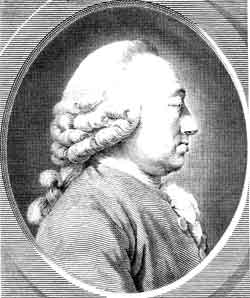Visual release hallucinations are a type of visual hallucination that occur in individuals with intact visual perception. These hallucinations are characterized by vivid and detailed visual experiences that are not based on any external stimuli. They can range from simple geometric patterns to complex and lifelike scenes. The causes of visual release hallucinations are not fully understood, but they are believed to be linked to a variety of factors including brain damage, sensory deprivation, and certain neurological disorders. In this article, we will explore the characteristics and possible causes of visual release hallucinations in more detail, shedding light on this intriguing phenomenon.
Visual release hallucinations, also known as Charles Bonnet syndrome (CBS), is the experience of complex visual hallucinations in a person with partial or severe blindness. First described by Charles Bonnet in 1760, it was first introduced into English-speaking psychiatry in 1982.
Signs and symptoms
Mentally healthy people with significant vision loss may have vivid, complex recurrent visual hallucinations (fictive visual percepts). One characteristic of these hallucinations is that they usually are “lilliputian” (hallucinations in which the characters or objects are smaller than normal). The most common hallucination is of faces or cartoons. Sufferers understand that the hallucinations are not real, and the hallucinations are only visual, that is, they do not occur in any other senses, e.g. hearing, smell or taste. Among older adults (> 65 years) with significant vision loss, the prevalence of Charles Bonnet syndrome has been reported to be between 10% and 40%; a 2008 Australian study found the prevalence to be 17.5%. Two Asian studies, however, report a much lower prevalence. The high incidence of non-reporting of this disorder is the greatest hindrance to determining the exact prevalence; non-reporting is thought to be a result of sufferers being afraid to discuss the symptoms out of fear that they will be labelled insane.
People suffering from CBS may experience a wide variety of hallucinations. Images of complex colored patterns and images of people are most common, followed by animals, plants or trees and inanimate objects. The hallucinations also often fit into the person’s surroundings.
Causes
CBS predominantly affects people with visual impairments due to old age, diabetes or other damage to the eyes or optic pathways. In particular, central vision loss due to a condition such as macular degeneration combined with peripheral vision loss from glaucoma may predispose to CBS, although most people with such deficits do not develop the syndrome.
The syndrome can also develop after bilateral optic nerve damage due to methyl alcohol poisoning.
Prognosis
There is no treatment of proven effectiveness for CBS. Some people experience CBS for anywhere from a few days up to many years, and these hallucinations can last only a few seconds or continue for most of the day. For those experiencing CBS, knowing that they are suffering from this syndrome and not a mental illness seems to be the best treatment so far, as it improves their ability to cope with the hallucinations. Most people with CBS meet their hallucinations with indifference, but they can still be disturbing because they may interfere with daily life. Interrupting vision for a short time by closing the eyes or blinking is sometimes helpful.
Treatment
Because there is no prescribed treatment, the first starting place is to reassure the CBS sufferer of their sanity, and some charities provide specialist hallucination counselling “buddies” (people who have had CBS, or have CBS and are no longer fazed by it) to talk to on the telephone. Sometimes it is carers and/or physicians that need advice and guidance.
The physician will consider on a case-by-case basis whether to treat any depression or other problems that may be related to CBS. A recent case report suggests selective serotonin reuptake inhibitors may be helpful.
History

Charles Bonnet, the first person to describe the syndrome.
The disease is named after the Swiss naturalist Charles Bonnet, who described the condition in 1760. He first documented it in his 89-year-old grandfather who was nearly blind from cataracts in both eyes but perceived men, women, birds, carriages, buildings, tapestries, physically impossible circumstances and scaffolding patterns.